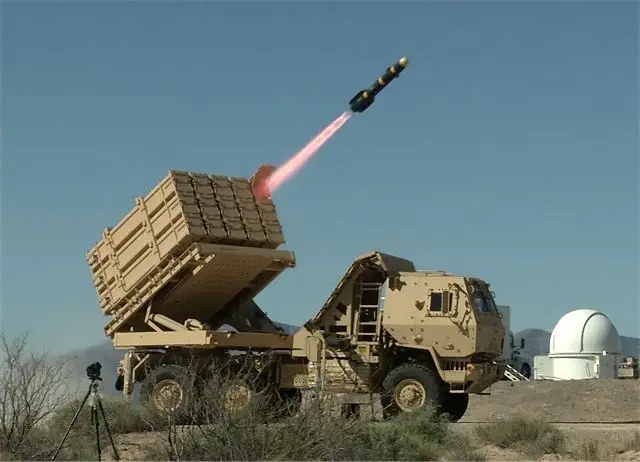US Army has tested new air defense system IFPC Inc 2-I Multi Mission Launcher 12804161
|
|
|||
|
Defence & Security News - Multi Mission Launcher
|
|||
|
|
|||
| US Army has tested new air defene system IFPC Inc 2-I Multi Mission Launcher | |||
|
A series of tests here is demonstrating the capabilities of a new air defense system in development by the U.S. Army. The Integrated Fire Protection Capability Increment 2-Intercept, IFPC Inc 2-I, is a defense system in development to protect Soldiers from aircraft, cruise missiles, and unmanned aerial systems, as well as artillery weapons like cannons, rockets and mortars.
|
|||
|
|
|||
 The IFPC Inc 2-I Multi Mission Launcher launches a Longbow Hellfire missile against a UAS representative target on White Sands Missile Range. The MML is a new air defense system undergoing testing on WSMR to integrate new control systems and missiles. (Photo Credit: Mr. John Andrew Hamilton (ATEC)) The IFPC Inc 2-I Multi Mission Launcher launches a Longbow Hellfire missile against a UAS representative target on White Sands Missile Range. The MML is a new air defense system undergoing testing on WSMR to integrate new control systems and missiles. (Photo Credit: Mr. John Andrew Hamilton (ATEC)) |
|||
|
|
|||
|
As an emerging Army air defense system, not only does it have the requirement to defend against a wide variety of threats, but it also must integrate into the Army Integrated Air and Missile Defense system. AIAMD is a networked air defense control system also currently going through testing on WSMR. To date the program has launched a Hellfire Longbow and a pair of AIM-9X Sidewinders utilizing the IBCS and sensor data from a Sentinel radar unit, as well as conducting a ballistic test of the Miniature Hit-to-Kill missile, a compact missile intended for use against rocket, artillery and mortar threats. In most of these tests the IFPC Inc 2-I system is being used against targets representing cruise missile or UAS threats to allow the IFPC Inc 2-I test to evaluate not just the systems compatibility with the IBCS and missiles, but also evaluate how it performs against those threats. IFPC Inc 2-I is a joint collaborative effort between the Army's Program Executive Office for Missiles and Space's Cruise Missile Defense Systems Project Office and the Army Aviation and Missile Research, Development, and Engineering Center. Produced largely in house by the Army, the program has seen rapid progress, going from concept, to demonstrator, to its current full featured prototype form in only a few years. |
|||


























